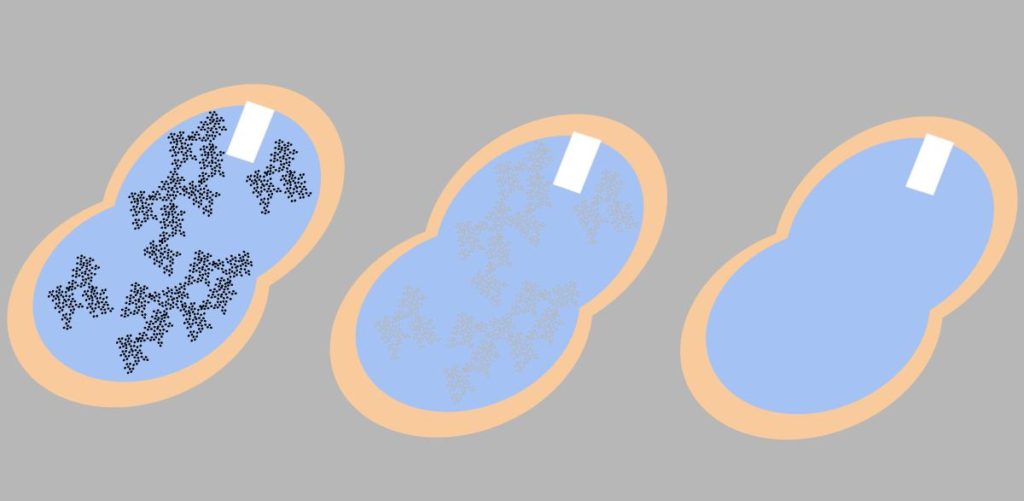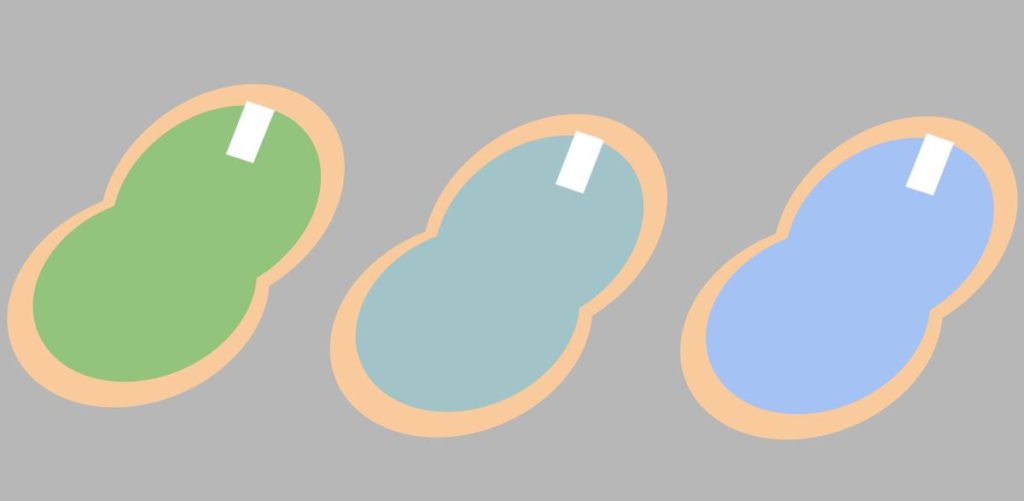There are some things you just never want to see in your pool. Mustard algae is unquestionably on that list.
If you are here because of a mustard algae problem, a solid plan, with a bit of patience and hard work, can eliminate it completely.
What is Mustard Algae?
Mustard algae is a living organism very similar in makeup to green algae. It’s slimy and gross and likes to cling to pool surfaces, walls, and ladders.
However, it is much more persistent and difficult to remove from the pool completely. Considered chlorine resistant, it takes a bit more than sanitizer to fight it off.
While it is most commonly found in southern and warmer climates, it can find itself in any pool in the world if given a chance.
Because it is yellowish-brown in nature, most pool owners can mistake it for pollen or sand. If testing reveals a water issue and it is indeed mustard algae, it’s time to get to work!
What Causes Mustard Algae?
Mustard algae can enter a pool through wind, rain, contaminated tools, and just having warmer water.
Like with most water problems, algae blooms grow when there is a lack of sufficient chlorine. When there is no sanitizer to protect the water, bad things start to grow.
Routine testing is important, folks!
How to Clear Mustard Algae From Your Pool?
Mustard algae might be chlorine-resistant, but it cannot survive an environment of high chlorine for a long period of time. Therefore, to eliminate it, we over-chlorinate the pool. This is also known as shocking.
The most important advice is to follow these steps completely from start to finish. Mustard algae can and will reemerge quickly if it is not completely gone from the pool.
This process might take a few days, even a week, so keep that in mind and make sure someone is at your pool during that time.
Clean Everything That’s Been in the Pool
The reason why mustard algae is such an issue is that it can survive outside of the pool! It can cling to bathing suits, cleaning equipment, and anything else the water contacts.
For this reason, it is important to first clean and wash anything that has been in contact with the pool in the last few days. Bathing suits need to be washed. Toys and floats need to be thoroughly cleaned with Clorox wipes or another diluted bleach cleaner. Any ladders and lighting fixtures will also need to be removed.
Unfortunately, replacing items is the only way to ensure mustard algae is completely wiped clean. Make extra sure every inch has been taken care of.
You will need your cleaning equipment, such as brushes, hoses, and skimmer nets. Keeping them in the shallow end of the pool over the duration of the process can help them stay sanitized as chlorine is added.
Brush and Vacuum the Pool
You will make really good friends out of your cleaning equipment during this process. Thoroughly brush the pool surface, walls, lighting niches, ladders, and everything until the last square inch. We want to disturb as much of the algae as possible.
After brushing, switch to the manual vacuum and hose to suck some of the algae out of the pool. It’s recommended to vacuum to waste so it goes straight out.
If needed, add more water to the pool.
Test the Water
Testing will reveal the baseline of what needs to be done. Accuracy is very important, both to understand each parameter and how much chlorine needs to be added, so a reliable kit will be needed.
The most accurate and reliable pool testing kit.
Type of Chlorine Test: FAS-DPD
Read our full Taylor K-2006 Review.
Keep The Pump Running
It would be ideal if the pool pump ran 24 hours a day during this process. The filter should catch as much of the mustard algae as possible.
Keep in mind that multiple cleanings of the filter, whether by backwash or grid cleanings, will need to be done.
Because mustard algae is extremely tenacious, the filter’s grids and shell will also need to be deep cleaned.
Get Ready For Chlorine
As we prepare for the chemical additions, take note of two parameters from the test results: pH and CYA.
pH levels should be around 7.2 to 7.4 to accommodate the high chlorine levels that will take place. Anything above 10 ppm FC makes pH testing unreliable so keeping lower is recommended.
Take note of the total alkalinity (TA) levels as that affects pH balance. Be sure it is at a recommended level between 50 to 90 ppm (further understand TA levels).
Lastly, the CYA reading is critical. This determines how much chlorine we must add to the pool during this process. The higher the CYA, the more chlorine we need.
Add Chlorine to Shock the Pool
Two types of chlorine are acceptable to use: liquid chlorine (recommended) and calcium hypochlorite, or cal-hypo. Tabs and other forms do not give us the chlorine boost as quickly as we need.
If using cal hypo, it will also increase calcium hardness (CH).
The process is to shock the pool until the algae has been cleared. And FYI, we will need lots of chlorine!
Find the correlating FC level based on the current CYA. We need to maintain this FC for the duration of this process. It is important to maintain this FC for the duration!
According to Richard Falk, an approximate shocking range is about 40% of your CYA level, which would be the following:
| CYA (Stabilizer) | FC to Shock Level |
|---|---|
| 20 | 10 |
| 30 | 12 |
| 40 | 16 |
| 50 | 20 |
| 60 | 24 |
| 70 | 28 |
| 80 | 32 |
| 90 | 36 |
| 100 | 40 |
Continue Brushing and Filtering
Brushing should be ongoing throughout the whole shocking process. Don’t let the mustard algae settle on the walls. Continue to clean and backwash the filter as needed
Continue Shock Treatment Until the Pool is Clear
As the hours and days go by, you should notice a considerable improvement in the clarity of the water. If not, continue to maintain that FC level and continue brushing.
Once you feel you have completed the process, some criteria need to be passed to ensure the mustard algae is gone from the water:
- The water is clear: At this point, the pool should be clear with no visible signs of algae on the floors, walls, ladders, steps, or anywhere.
- Combined chlorine (CC) is less than 0.5: Combined chlorine (CC) is part of the testing process that is a measurement of “bad stuff”, or chloramines, in the water. When CC is 0.5 or below after testing, it is safe to assume there are no more contaminants. Anything above that means the fight is not over yet.
- FC is maintained overnight: Lastly, check FC levels overnight. Chlorine is consumed by two things: organic compounds and sunlight. We want to eliminate the sun as a potential factor for chlorine loss so this should be done overnight. After the sun goes down, record FC levels. Then, before the sun rises record FC again. If FC levels decrease by 1 ppm or lower, water is clean. If not, we continue fighting.
Add an Extra Mustard Shock!
How much chlorine is too much? You are about to find out. For an extra layer of caution, shock the pool again but at a higher level of FC for a day.
The mustard shocking range is about 60% of CYA. Follow this chart:
| CYA (Stabilizer) | FC to Mustard Shock Level |
|---|---|
| 20 | 13 |
| 30 | 18 |
| 40 | 24 |
| 50 | 29 |
| 60 | 35 |
| 70 | 42 |
| 80 | 46 |
| 90 | 52 |
| 100 | 57 |
Brush and Throw Equipment in the Pool
One last thorough brushing should ensure that the mustard algae is completely eliminated.
At this point, while your pool is at such a high level of FC, throw any cleaning equipment that has been used into the shallow end of the pool. Turn on any water features to run the chlorine through their system as well.
The last thing we need is a small piece of algae to survive this process and start over. Replacing equipment and lights if it is necessary might keep your mind at ease.
How to Prevent Mustard Algae in Your Pool
After reading that, there is no way you want to go through a mustard algae outbreak. Prevention is key, and it starts with the basics:
- Test your water frequently: Testing is the only way to know if there is an issue with your pool’s water. Seeing it is too late. The more frequent testing is done, the safer you can be.
- Maintain proper water chemistry: After testing, ensure that all chemistry parameters are balanced and at the recommended levels.
- Keep the water circulating: Not everyone has the luxury of continuously running their equipment, but it should be running at least 8 hours a day to get at least one cycle of water through the system.
- Brush and vacuum weekly: Clean water starts with a clean surface. Routine brushing and vacuuming will help to disturb any contaminants that may be on the walls or floors.
You Deserve a Relaxing Soak
Mustard algae is very difficult and time-consuming to get rid of. Not everyone may appreciate the hard work and dedication it took. But we know!
So grab a beverage, kick back, and start enjoying the pool again!



